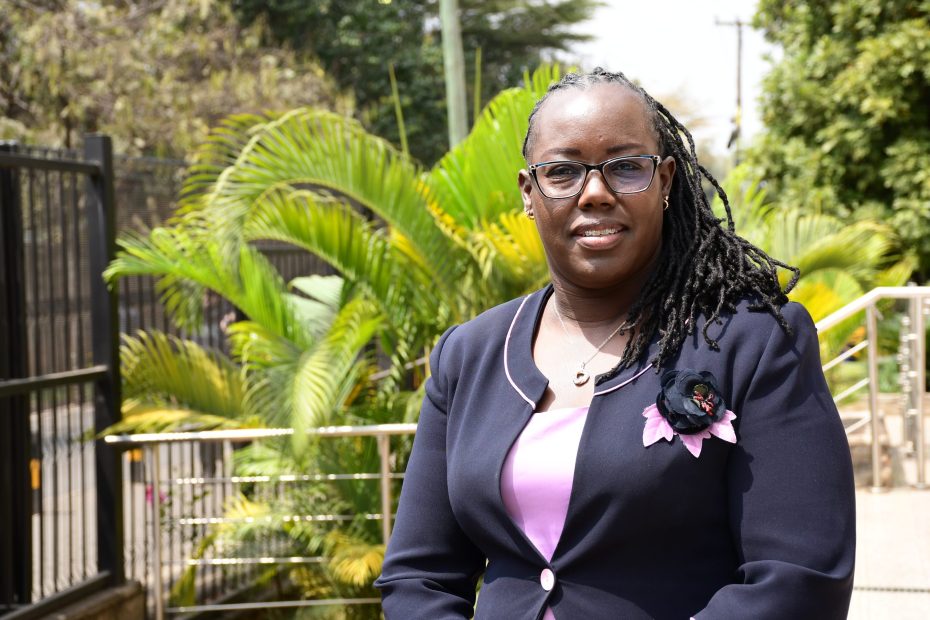Shaping Educational Leadership

How One Lecturer is Shaping Educational Leadership Through eMsingi

When Dr. Margaret Kosgei, a lecturer at Kenyatta University’s School of Business, Economics, and Tourism, came across the Certificate in Educational Management, Leadership and Administration by eMsingi, it felt like the perfect fit for her career ambitions.
“I’m deeply passionate about what I do,” she said. “Learning new skills and embracing new challenges is what fuels my professional growth.”
Her journey into the course began with a referral from a trusted friend and colleague, Prof. Kellen Kiambati. “We’ve had other engagements together, and I truly appreciate her recommendation.”
For Margaret, the course aligned perfectly with her strategic yearly goals of acquiring new skills, attending conferences, and contributing to research.
What stood out most was the flexibility. “When I found out it was self-paced and online, I knew I could manage it even while I was outside the country,” she recalled.
While balancing academic responsibilities, international travel, and course participation, Margaret credits the course’s design for helping her stay committed. “The self-paced nature really worked for me,” she said. “Though I missed a few live sessions initially, I caught up with recordings and became more engaged once I returned to the country.”
Being a hands-on learner, Margaret appreciated the structure of the program. “Compared to other courses I’ve taken, this one was quite effective,” she said. “But I would love to see more visual interaction, maybe a session where we can all have our cameras on, or even a one-day physical session.” For her, adding a human element would enhance the already valuable content.
Value, for Margaret, came in many forms, especially in practical application. “One immediate takeaway was the DECIDE decision-making model,” she said. Serving as chair of a committee on excellence in her school, she found herself amid a tense debate on revenue and expenditure. “I took a step back and applied the model. By the next meeting, everything became clearer. I didn’t even have to push. The members brought up the issues themselves.”
Even though her official leadership roles haven’t yet allowed her to implement everything, the course has already made a mark. “I plan to present my certificate as proof of professional development,” she said. “At the Directorate of Student Affairs, the leadership lessons from the course will be incredibly useful.”
Initially, Margaret noticed that many course examples centered on primary and secondary education. “But as I progressed, I realized how applicable it was to higher education too,” she noted. “It resonated with my acting leadership roles in the past, and going forward, I will be more effective because of this experience.”
Time, unsurprisingly, was a persistent challenge. “Even after I returned to Kenya, competing priorities made it hard to attend live sessions consistently,” she admitted. But she leaned on prioritization and time management skills that only sharpened through the course.
So, would she recommend the course? “Absolutely,” Margaret said with conviction. “Especially to school administrators, educators, and anyone managing institutions. It’s practical, self-paced, and impactful, offering real tools to improve leadership and tackle workplace challenges like unhealthy dynamics.”
Looking ahead, Margaret is focused on using what she’s learned to serve better. “For me, it’s about sharpening the axe,” she said. “I don’t see this learning ending here.” Already engaged in research, she’s exploring how the course insights could inform studies in competency-based education, curriculum design, and the emerging role of AI in education.
AI, in fact, was a topic Margaret had strong thoughts on. “It’s creeping in very well,” she said. “You give students assignments, and five minutes later, you’re looking at AI-generated work.” But she’s less concerned about AI replacing educators and more interested in how it can work for them. “If it can be included in curriculum development and content delivery, it could be of real interest, especially for those of us in curriculum design.”
When asked how students can use AI ethically, she was clear, saying “AI should complement, not replace, a student’s own reasoning, tone, and originality of thought. While AI can be a powerful tool, particularly for research support and structuring ideas, its ethical use requires transparency and critical engagement.”
According to her, these elements are essential to meaningful learning. It’s not just about producing content; it’s about demonstrating understanding, applying knowledge, and making the ideas your own. “Ethical use of AI, therefore, lies in using it to enhance learning not bypass it,” she concluded.
For Margaret, eMsingi is more than just a course; it’s part of a lifelong mission to grow, adapt, and make a meaningful impact. Her experience was shaped by dynamic interactions with a dedicated facilitator, Dr. Harry Bett, and passionate coursemates, creating a space for both personal and professional transformation. “I believe in sharing knowledge,” she reflected, “and there’s so much more we can do with this not just for students, but for our communities.”
Article Written by Teresa Nekesa Makokha